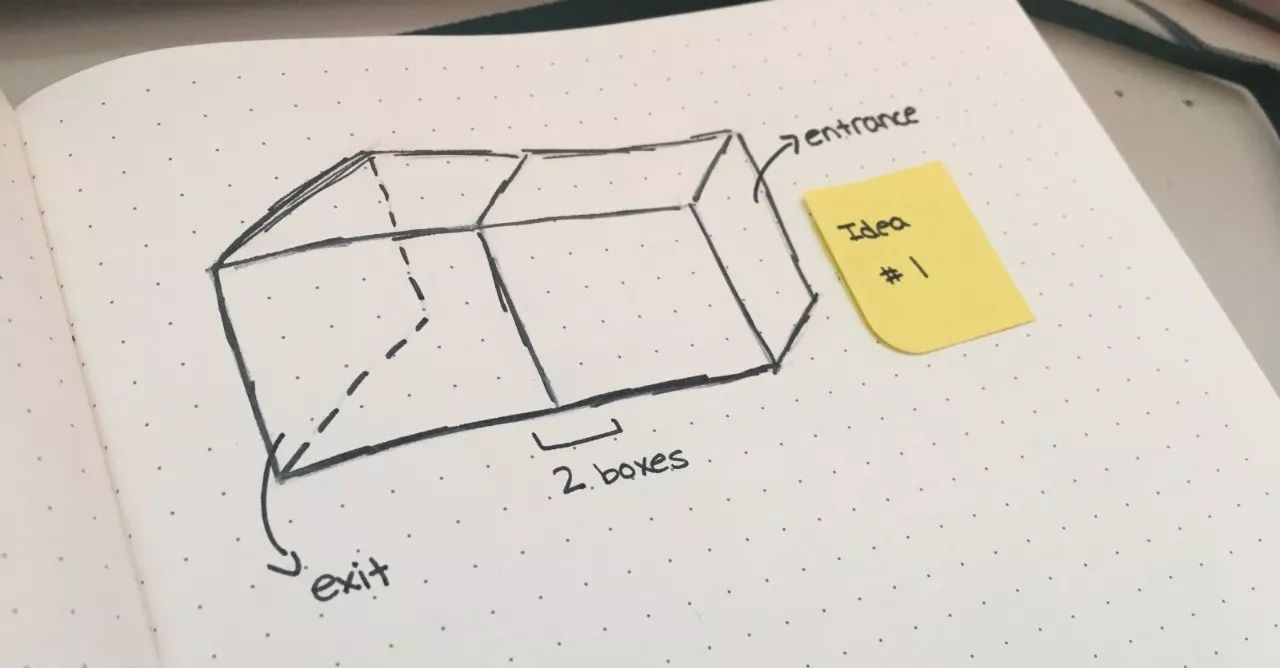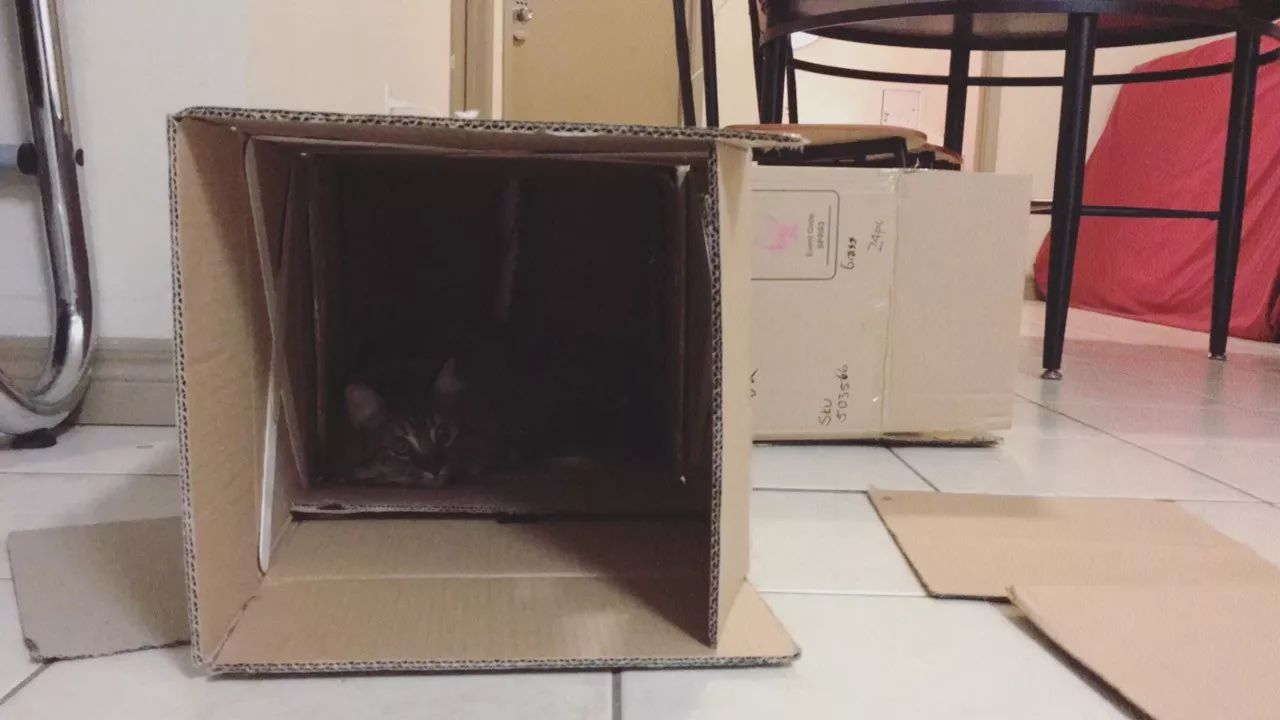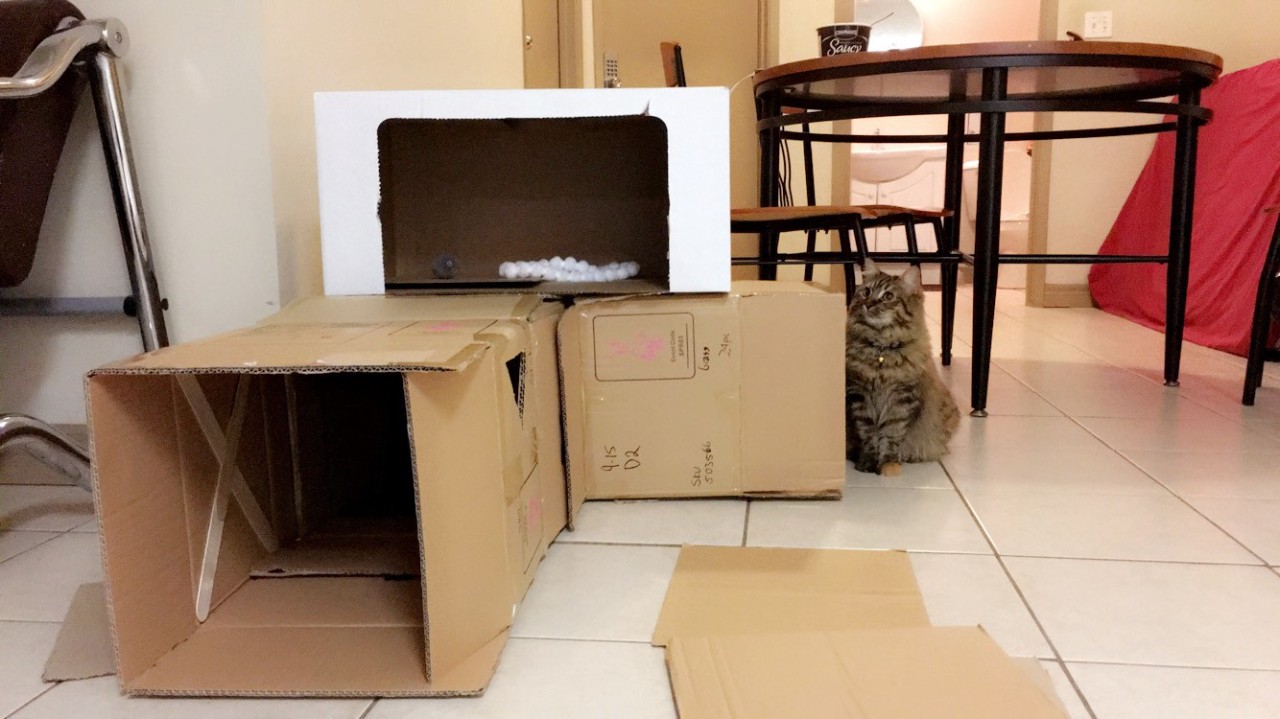Product design thinking is based on continuous research and improvement.
First come meet Kiwi, my 6-month-old kitten. With her help, I learned how to deal with complex product design issues.

Since I first adopted Kiwi from the rescue station, I soon realized that my part-time job with an hourly salary of US$13.25 could no longer support our two lives together. Those cat dollhouses are really too expensive, it makes no sense to be expensive.
So I decided to use my ability in design and development and personally help her make a small house. Throughout the process, I kept observing and thinking, that is, I practiced product design thinking, and at the same time I learned a lot of things that can be used in real life.
Design thinking is a deep understanding of the problems people face in reality.
– IDEO Human-oriented Design Toolkit
We all know that to create a superior product experience, designers must have a full understanding of the real needs of users; we need to understand the problems they face, understand their thoughts and feelings… But for cats, we should How to practice design thinking?
Lesson 1: Build empathy with users
Design thinking requires us to establish deep empathy with our target users. Observe users and talk to them, you will understand their true expectations, behavioral motivations and attitudes.
In the first few weeks of adopting Kiwi, I observed a lot of characteristics in her. She is a curious explorer, a little hairball full of energy, and sometimes reckless. She would find any place to sit, and always find a space. Cats are curious by nature and always eager to explore their surroundings. Kiwi is no exception – she sits on a bookshelf, hides in a closet or sleeps in a box – she likes all kinds of small corners that are safe and comfortable enough to accommodate. She also likes freshly laundered clothes, fluffy scarves or blankets. She would smell any interesting things she could find, and would circle around those “unknown” objects and growl.
Therefore, the dollhouse that Kiwi likes needs to have the following characteristics:
- Satisfy her curiosity.
- Allow her to explore around.
- Provide comfortable and dark corners.
Experience
Whether the user is a human or a cat, by establishing empathy, we can let go of our subjective assumptions and truly understand the needs and problems. Empathy is a key element in the design process, which can help us observe the world through the eyes of target users and understand their experiences and feelings.
Lesson 2: Fast trial and error, fast iteration
Don’t be afraid of initial failure, iteration is the only way to product design.
Everyone knows that to verify a product idea, there is no more effective way than to realize it and give it to users for trial. Create, verify, iterate-and so on, until everything is on the right track.
The same is true for Kiwi’s dollhouse. I drew some sketches and then made an MVP to verify my ideas.
Iteration 1

Solution : Connect two cardboard boxes into a pipe.
Usability test : I hold Kiwi in front of the pipe and observe whether she will interact with it.
Test result : Kiwi is just in a daze, not interested in playing.
Conclusion : Maybe Kiwi doesn’t know what to do? Is the pipeline not attractive enough? If this is a usability test with humans, I can study it more clearly. I assume that you are currently designing for children. You can’t get a clear answer by continuing to ask questions. You can only observe patiently and reason carefully.
Iteration 2

Solution : splicing four cardboard boxes into an “L”-shaped pipe to increase complexity and interest.
Usability test : I held Kiwi in front of the pipe. She was a little curious and got halfway in, but didn’t know what to do next; she was a little confused.
Test result : Kiwi does not know how to interact with the pipeline structure, she may need some kind of hint or clue.
“Affordance” (Affordance) defines which operations can be performed, and “Signifier” (Signifier) indicates how people discover these operations. The sign is a visual operation guide. For designers, the concept of signification is more important than demonstration.
– Donald Norman, “Design Psychology”
Iteration 3
Solution : Splice four cardboard boxes into an “L”-shaped pipe, and open a window on the pipe wall so that Kiwi can peek outside.
Usability test : I held Kiwi in front of the pipe, she got in and started exploring, and tried to poke her little paw out of the window. I teased her outside the window with my finger, and played with her for a while beating moles. Next, Kiwi successfully passed through the pipe and jumped onto the pipe.
Test result : The window provides a possibility for interaction, but I didn’t expect Kiwi to jump to the pipe; it’s quite interesting.

Iteration 4
Solution : A two-story structure was added, and the middle connection was opened up for Kiwi to go up and downstairs.
Usability test : I held Kiwi in front of the pipe, and she explored freely, jumping and playing between the two layers of pipes.
Test result : success!

Experience
“Quick trial and error, fast iteration” is an important idea of product design. The “trial and error” lacking subsequent thinking and iteration is meaningless – full observation and research in the process of verification, acquisition of new knowledge and completion of the iteration are the fundamental goals.
Lesson 3: Increase pleasure
Iteration 5 (endless improvement)
Solution : Add bells and feathers, and put blankets in the aisle to enhance the fun of the dollhouse.
Usability test : Kiwi is completely fascinated by this dollhouse, and only occasionally comes out to eat or snuggle with me.
Test result : Exceeding basic requirements, adding more emotional elements to the product, and improving user satisfaction.
“Basic needs: Failure to meet will disappoint users, and satisfaction will not increase satisfaction.”
– Jared Spool, Kano model
Experience
Once the basic needs are met and the user’s basic problems are solved, we need to identify those points that can be improved and improved. Attention to details is very important, which will determine whether the product experience can go from “pass” to “excellent”. The excellent performance in the details will increase user pleasure and achieve an impressive overall experience.
About “User Participation in Design”
In the design process of the dollhouse, I always involved Kiwi to verify the fit between the plan and the needs in a timely manner. Through observation, I can better explore her needs; through testing, I can iterate on the MVP in time. All of these helped me to establish a better empathy with Kiwi, which in turn shaped the final product form.
“You are not your user”, this UX motto fits my current case perfectly.
summary
Product design thinking is based on continuous research and improvement. Maintaining the validation and iterative thinking model can not only be applied to the product design field that we are familiar with, but also can be used in daily life, and even design a dollhouse for my cat.
